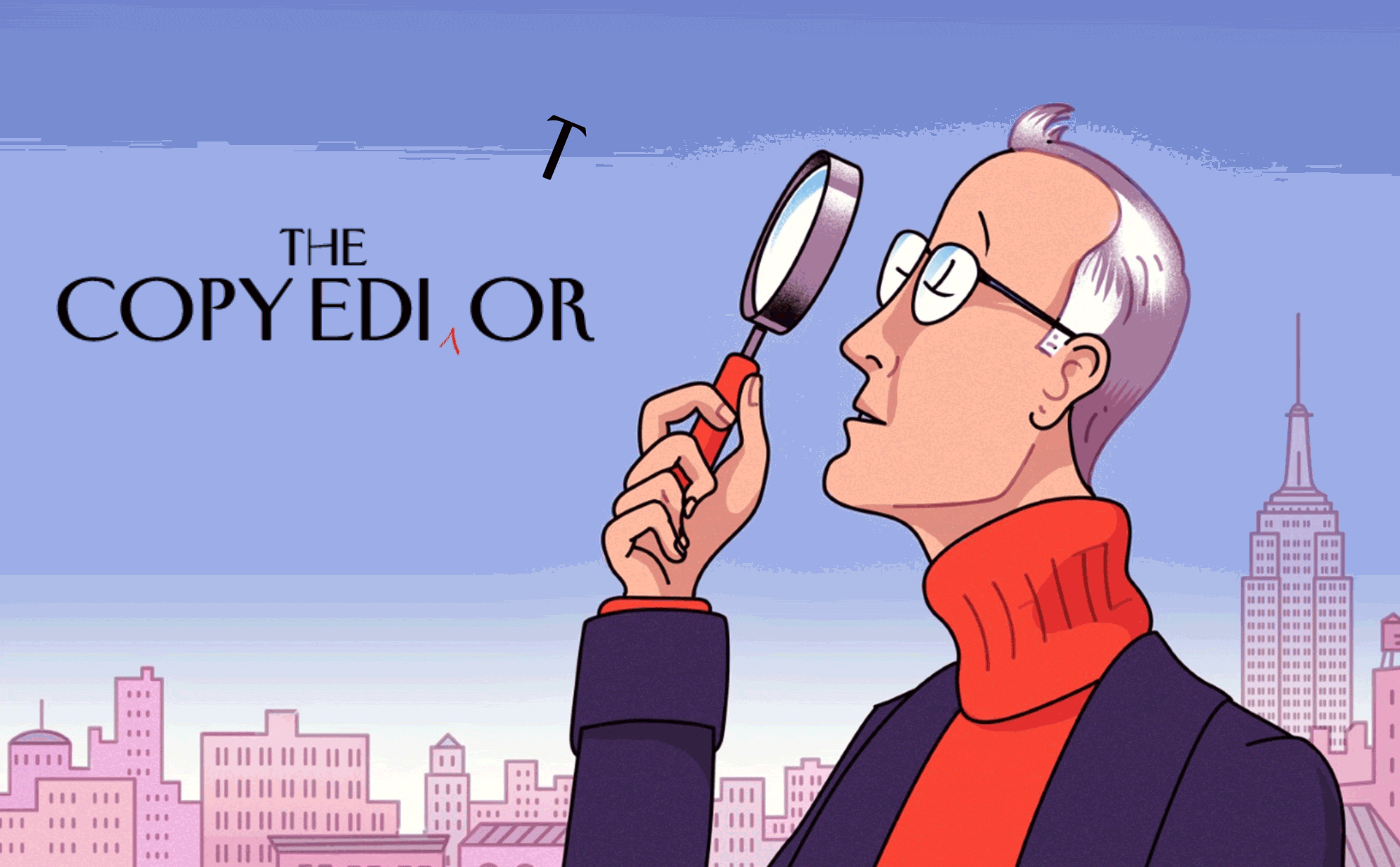Briefly, earlier this year, Andrew Boynton, ’83, was famous, which is rare for a copy editor. But it was the New Yorker’s 100th birthday, and the magazine’s head of copy was celebrating with a little italicizing. Among the legendary publication’s style changes that generated a flurry of press coverage: using slanted letters to designate a person’s internal thoughts. Traditionalists will be relieved that the centennial “reëxamination” of the style guide showed restraint; the diaeresis, indicating that adjacent vowels are pronounced separately, remains intact. Karen Springen, ’83, chatted with Boynton about the changes—and the stetting—as he prepared to retire after three decades as a guardian of grammar.
This interview has been edited and condensed from three conversations.
 Courtesy Andrew Boynton
Courtesy Andrew Boynton
Stanford: The changes you made include using one word, with a lowercase w, for website and one word for cellphone. The hyphen in teen-ager stayed. How did you decide?
Boynton: One of the criteria we used in keeping things was that they reflected the personality of the magazine. There are people who love us for our quirks. The things we wanted to change were of more recent vintage, things in the technology world—like Web site and cell phone—that didn’t have that long history with the magazine.
How did it feel for a copy editor to be on the front page of the New York Times?
Surreal. Most copy editors enjoy being in the background. Good copyediting isn’t noticed. You notice if something doesn’t have copyediting. It’s sort of a stealth kind of operation.
You also got national attention when you appeared on Jeopardy! in 1992. How was that brush with fame?
I flubbed the Daily Double. The category was Famous Women. It was something like, “This educator was the first woman to receive a medical degree in Italy.” I totally blanked. It turned out to be Maria Montessori.
I did get Final Jeopardy right. The category was The Elements. “It has the lowest melting point of any metallic element, -38° F.” The answer was mercury.
That wasn’t enough to win?
I came in second.
Your first full-time job after graduation was as an editorial assistant at Art & Antiques magazine. Then you were a contemporary dancer for a decade with Susan Marshall & Company. What made you switch?
When I moved to New York, I kept dancing on the side, and then I met Susan, somebody I respected and whose work I loved. I was 24. Dancing was not something I could come back to later. It was a no-brainer for me.
You began to find your way back to editorial work nine years later, when one of your dance friends mentioned an opening for a night-shift freelance proofreader at the New Yorker. You joined the copyediting staff full-time in 2001. What do dance and copyediting have in common?
You really do have to pay attention to the little things with both. The [dance] company’s process was very collaborative. I wasn’t just being told what to do. Even though copyediting is not thought of as creative, you’re still having to craft something and think of a better way to do something, how to shape something. The collaboration is very important. It’s a conversation between the copy editor and the story editor.
The New Yorker is legendary for its copyediting. Would you explain how it works?
When one of the senior copy editors, the OKers, starts working on the piece, it’s pencil on paper, single column. It’s in depth, trying to solve as many of the problems as possible at an early stage. The OKer will read it several times. It gets cleaner and cleaner. The copy editor is marking things that are clear errors and correcting those but also noting places where things could be misread and suggesting alternative phrasing. All of this is in service of, how is it going to make the reader’s experience easier? There’s a New Yorker custom whereby suggestions by a copy editor to an editor are suggested with question marks. It’s respectful: “I’m not telling you to do this. I’m suggesting it. It’s up to you as the story editor to decide.” Often in these queries, even if the editor doesn’t exactly like the fix you suggested, it can spark a recognition that there is a problem there. It can spark a quest to find the way to fix this problem.
Would you talk about clarity, your holy grail?
You’re trying to maintain the ideas in the author’s voice. You’re weeding out the extra verbiage or convoluted logic or reasoning and filing it down a little bit without robbing it of life. You’re trying to do it in a clean, concise way without making it sound like a dictionary.
It’s peeling away the superfluous language—overused adjectives and adverbs.
What is your copyediting pet peeve? I think it’s the dangling modifier?
It is. It’s like this mystical animal. When you find one, it’s just so satisfying to grab hold of it and fix it.
You’ve copyedited everything, including the Shouts & Murmurs page and the cartoon captions. How do you keep a light touch so you don’t get rid of the humor?
You put on a different hat. Being too precise or too grammatical can be a distraction from the humor. In the early days, I would question whether something should be who or whom. The editor would say, “No, people don’t talk like that.” Also, in Shouts & Murmurs, a person inexperienced with working with humor can be too literal in wanting to know the identification of everyone who’s mentioned. There’s a breeziness to humor that you have to accept. With the cartoon captions, it’s knowing the little tricks to make the speech sound natural. It’s really the punctuation that makes it feel conversational. A semicolon in somebody’s quote stands out as fussy, whereas a dash—people read over that much more easily.
What’s the most memorable story you’ve ever copyedited?
Lawrence Wright wrote a piece at the end of 2020 about the first nine months of COVID that we had lived through—this momentous event. I wanted to be a part of it because of the topic and because of the writer, who’s an incredible investigative reporter, and the other personnel involved. It was 30,000 words. It took up the entire issue. The fact that it was so long was this challenge. Can I read what turned out to be 90 columns of type closely and attentively over and over again?
Would you explain the closing meeting for that story?
We meet and we go through the piece page by page. We do the same order for each page: writer, fact-checker, OKer, and then the editor. The editor is the arbiter of the questions. The editor on this piece is wonderful because he’s very decisive. During this meeting, the OKer is basically the stenographer, noting all these changes on a physical paper proof. The back-and-forth for 30,000 words was very intense. There was a lot of information from nine months of COVID that had to be untangled. Everyone’s interest is different. The fact-checker’s interest is in the facts. My interest is in: How does this read? Are there infelicities? Is there confusion? The writer is interested in: How does it sound? Is this what I want it to say? The editor is giving changes that apply to all of those things and ruling on questions. We actually had two closing meetings. We wanted to get it perfect. The first meeting, I know we broke for a meal in the middle of it. It was probably six hours.
What would you recommend for alums who want to develop a love of words in their kids or grandkids?
Read quality publications and books. Reading is the best way that we’ve always had to acquaint ourselves with words and figure out what kind of writing we like and don’t like.
I know you love a good mystery novel.
I’m obsessed with detective fiction now. I’m starting to read Agatha Christie’s Poirot novels, in order. I’m going to read all 38.
Any occupational hazards?
I still kind of copyedit books that I’m reading for pleasure. It can distract me a little bit. I would like to get that out of my system so I can read like a normal person.
Karen Springen, ’83, is a journalism professor at Northwestern’s Medill School. Email her at stanford.magazine@stanford.edu.



